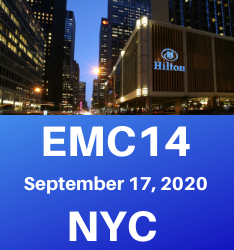|
|
|
|
|
PPL Seeks To Offer Renewable Energy Supply Option To Non-Shopping Default Service Customers
The following story is brought free of charge to readers by EC Infosystems, the exclusive EDI provider of EnergyChoiceMatters.com
PPL Electric Utilities has filed with the Pennsylvania PUC a proposed electricity default service plan (DPS V) for the period June 1,
2021, through May 31, 2025 that would, among other things, allow PPL to offer non-shopping default service customers a 100% renewable energy option.
"As part of its DSP V Plan, PPL Electric is proposing to create a renewable rate
program ('PPL Electric Renewable Rate Program') for default service customers. This rate will
provide a renewable energy option for customers who remain on default service. The renewable
rate program is not designed to replace any other rate and will be opt-in only," PPL said
"The PPL Electric Renewable Rate Program is designed as an adder to the PPL
Electric PTC and is based on the purchase of AECs that cover 100% of participating customer
consumption. If an interested customer who is eligible for the Renewable Rate Program contacts
PPL Electric and affirmatively elects to participate in the program, the adder will be applied to
their bill based upon the value of PA non-solar Tier I AECs. Customers will remain in the
program until they request removal from the program or begin shopping," PPL said
Customer rate
schedules RS, RTS, GS-1, GS-3 (<100kW), GH-2, and LP-4 (<100kW), excluding PPL Electric
OnTrack customers and Net Metering customers, would be eligible to participate in the Renewable Energy Rate
The Renewable Energy Rate adder would be set based upon the combined average price of the
most recent Tier I non-solar AEC auction results, which, as described below, would be conducted by PPL each January and July. In addition to the price set as a result of
the AEC auction process, the Renewable Energy Rate will include reconciliation
exclusively for the Renewable Energy Rate.
The Renewable Energy Rate adder would be
charged to customers and displayed on their bills as a cent/kWh value. In addition to the Tier I non-solar AEC price 1 and reconciliation,
the Renewable Energy Rate adder will also include Gross Receipts Tax (GRT).
Customers may select the Renewable Energy Rate in two ways: 1) calling PPL Electric
and requesting to sign-up on the Renewable Energy Rate, or 2) sign-up on the rate
through the PPL Electric customer web portal.
PPL Electric intends to update its website to present the Renewable Energy Rate and
explain the program terms and eligibility. PPL Electric will also include information on
the program in its PPL Electric Connect newsletter.
Standard Offer Customer Referral Program (SOP)
PPL proposes changes to the Standard Offer Customer Referral Program (SOP), under which customers are offered, when calling PPL, the ability to be assigned to a retail electric supplier at a price which is 7% less than the current Price to Compare, with the supplier rate fixed for 12 months. Currently, at the end of the 12-month term, the customer remains with the retail supplier, with pricing determined by the supplier
From 2017 through 2019, an average of 41,823 customers per year enrolled in the
SOP.
PPL proposes the following changes to the SOP program:
• automatically transfer SOP customers to default
service upon the expiration of their SOP contract unless the customer affirmatively elects to
remain a shopping customer;
• educate customers of their options prior to the
conclusion of the 12-month SOP contract;
• replace specific SOP scripting used by PPL Electric CSRs with
guidelines to navigate customers through the SOP process, while giving the Company flexibility
to modify the precise words if customer confusion becomes apparent;
• update third-party
scripting to reflect changes made to the SOP; and
• change the EGS enrollment term from
quarterly to semi-annually, coinciding with the PPL Electric PTC.
PPL said of its proposed change, to default SOP customers back to default service at the end of the SOP term, that, "Experience has shown that most customers do not take any action upon expiration of their SOP
contract and therefore are placed on a new contract at a new rate with their existing supplier. This procedure is problematic because the new rate is oftentimes higher than the currently-effective
PTC and higher than the customer’s previous rate, which in some instances can cause
the customer to become payment-troubled. Therefore, PPL Electric proposes that upon the
expiration of a customer’s SOP contract, the customer be automatically transferred to default
service at the PTC unless the customer affirmatively elects to remain a shopping customer."
"PPL Electric proposes that 30 days prior to the expiration of the SOP contract,
PPL Electric will notify customers that they will be transferred to default service at the PTC
upon expiration of their SOP contract unless they elect to remain a shopping customer. To
educate customers regarding their options upon expiration of their SOP contract, PPL Electric
will provide the customers whose SOP contract is expiring with educational material regarding
shopping," PPL said
Prohibition On Customer Assistance Program (CAP) Customer Shopping
PPL proposes to require all Customer Assistance Program ('CAP')
customers to take default service
Currently, CAP customers, other than those on legacy EGS contracts, may only be served by a retail supplier under a CAP-specific SOP program (CAP-SOP).
In order for an EGS to participate in CAP SOP, it must agree to serve customers at a 7% discount
off the PTC at the time of enrollment, with the EGS price fixed for 12 months. At the end of the 12-month term, the customer is re-assigned to the CAP-SOP pool, with pricing set at a 7% discount to the then-current PTC (unlike the current regular SOP program where the customer remains with the original EGS with pricing determined by the EGS)
PPL said that EGS participation in the CAP SOP has been minimal. At the commencement of
the CAP SOP in June 2017, through November 2017, there were two EGSs participating in the
CAP SOP. From December 2017 through May 2018, a single EGS participated in the program.
From June 1, 2018 through February 29, 2020, there were no EGSs participating in PPL
Electric’s CAP SOP. During this time, CAP customers were not eligible to shop as the CAP
SOP was not active. Effective March 1, 2020, there is one EGS participating in the CAP SOP.
PPL noted that, under the terms of the CAP SOP approved in DSP IV, OnTrack (CAP) customers
enrolled with an EGS prior to entering OnTrack are permitted to remain with their existing
supplier until the end of their contract term.
As of January 2020, there were 7,975 OnTrack
customers shopping with an EGS outside of the CAP SOP because these customers were
shopping with an EGS prior to participation in the OnTrack program.
"In PPL Electric’s experience, customers who shopped prior to enrolling in OnTrack continue to pay significantly
higher prices than the PTC," PPL said
A witness for PPL said that, "In 2019, an average of
62% of CAP customers who are shopping shopped at a rate above the PTC."
PPL reports that for 2019, in aggregate, CAP customers with an EGS paid $2.9 million more than the PTC, reflecting about $3.2 million in CAP customers who paid above the PTC, offset by CAP customers who saved $255,000 with an EGS
"[While] some shopping OnTrack customers are paying rates below the PTC, the
realized savings by these customers pales in comparison to the costs incurred by OnTrack
customers paying rates above the PTC," a witness for PPL said
"PPL Electric
proposes to eliminate the CAP SOP beginning with the DSP V Program. As a result, CAP
customers will be ineligible to shop and must remain on or be placed on default service
beginning on June 1, 2020. PPL Electric notes that low income customers may elect to shop at
any time. However, such customers will not be permitted to enter, or remain in, the CAP
Program while shopping," PPL said
More specifically, PPL Electric is proposing that in order to enroll in OnTrack (CAP), customers must receive default service at the price-to-compare. This would end the current practice of allowing existing EGS contracts to continue upon a customer enrolling in the OnTrack assistance program
This proposal, "serves to protect customers who were
shopping before entering OnTrack," a witness for PPL said
Default Service Supply Procurement, Rate Designs
PPL's proposal for default service supply and rate design is largely similar to its existing procurements and rate design, with two notable changes. First, PPL proposes an additional block energy purchase for residential customers. Second, PPL proposes to remove the AEC (renewable) compliance obligation from the wholesale full requirements contracts, with PPL conducting separate AEC auctions for default service load
For the Residential Customer Class, PPL Electric proposes to continue to procure
layered 6-month and 12-month products twice per year, in April and October, with the first
procurement occurring in April 2021 for Default Service beginning June 1, 2021. To replace the
10-year, 50 MW block product expiring on May 31, 2021, PPL Electric proposes to procure two
5-year 50 MW long-term block products. The two 50 MW block products will be
energy only, and all other services will be procured by PPL Electric through PJM (for capacity
and ancillary services) or the competitive market (for AECs). Exclusive of the two long-term 50
MW block products for the Residential Class, the procurements will be approximately 20% 6-month contracts and 80% 12-month contracts
For the Small C&I Customer Class, PPL Electric proposes to continue to procure
layered 6-month and 12-month products. The procurements will be approximately 45% 6-month
contracts and 55% 12-month contracts.
For residential and small commercial customers, the class-specific GSC-1 (generation rate) will be adjusted every six months to reflect the cost of the Default
Service supply contracts in place for the upcoming six-month period. It will be reconciled every
six months for over and under recoveries by customer class
For non-shopping Large C&I default service customers, the DSP V Program
provides for the purchase of power supply through 12-month, full-requirements, load-following
spot market supply contracts to meet the default service demand of those customers electing to
receive such service.
For the Large C&I Customer Class, the Company proposes to continue to obtain
Default Service supply on a real-time hourly basis through the PJM spot market. PPL Electric
proposes to issue a single annual solicitation to obtain competitive offers from suppliers to
provide the Default Service spot market supply to the Large C&I Customer Class. These annual
procurements will coincide with the PJM Planning Period. Annual solicitations will be held in
April for the upcoming PJM planning period. This is the same solicitation process and basic
product for Large C&I Customers currently used in the Commission-approved DSP IV Program
and used under prior DSP programs. As explained below, the Company will procure AECs
separately through biannual competitive auctions.
As noted above, PPL Electric proposes that new DSP V contracts not require the wholesale suppliers to
provide Alternative Energy Credits (AECs) to meet the AEC obligations.
PPL Electric will hold separate biannual auctions to procure the necessary AECs for default service
"PPL Electric will procure the required AECs separately through
biannual competitive auctions held each July and January. Each auction will seek to procure
AECs based upon the forecasted need for the six months following the auction for all customer
group loads, with approximately 50% of the annual supply being procured at each auction. The
auctions will be open to any qualified AEC aggregator or broker, and there is no supply cap for
each auction," PPL said
The full requirements contracts will also not include Non-market-based Transmission Services, with such Non-market-based Transmission Services consisting of: Network Integration Transmission Services; Transmission Enhancement
Costs; Expansion Cost Recovery Costs; Non-Firm Point-to-Point Transmission Service Credits; Regional
Transmission Expansion Plan; and Generation Deactivation Charges. PPL Electric is billed by PJM
Interconnection, LLC for these Non-market-based Transmission Services for default service customers and recovers
those costs through its Transmission Service Charge (TSC).
For its statutorily required Time of Use supply program for default service customers, PPL Electric is proposing to adopt
the current contingency plan as its TOU Program. That is, PPL Electric will offer TOU rates to
eligible customers by securing the generation for TOU customers through the default service
auctions without holding a TOU-specific auction that solicits bids from wholesale suppliers.
Like the current contingency plan, the on-peak and off-peak rates in the DSP V Program will be
established based upon the generation rate of the PTC in effect at the time. PPL Electric
proposes to continue the current 10% discount to the generation component of the applicable
PTC for the summer and winter off-peak rates. The Company also proposes to continue the
same formula used to derive the on-peak rates under the current TOU Program. PPL Electric
also proposes that the seasons, on-peak hours, and off-peak hours that have been established in
its current TOU Program be retained in the DSP V. With respect to customer eligibility, all
Residential and Small C&I customers, except for CAP, virtual net-metering customers, and a
grandfathered water heating rate identified as 'RWO' will be eligible for TOU rates.
Docket P-2020-3019356
ADVERTISEMENT Copyright 2010-20 Energy Choice Matters. If you wish to share this story, please
email or post the website link; unauthorized copying, retransmission, or republication
prohibited.
Proposes Change To Standard Offer Customer Referral Program To Move Participants Back To Default Service At End Of Retail Supply Term If Customer Does Not Affirmatively Select Choice
Seeks To Terminate Ability Of Customer Assistance Program Customers To Take Competitive Retail Electric Supply
Files New Default Service Plan, Would Remove Renewable Compliance Costs From Full Requirements Wholesale Contracts
March 26, 2020
Email This Story
Copyright 2010-20 EnergyChoiceMatters.com
Reporting by Paul Ring • ring@energychoicematters.com
NEW Jobs on RetailEnergyJobs.com:
• NEW! -- Energy Procurement Manager
• NEW! -- Channel Relations Manager -- Retail Supplier
• NEW! -- Senior Retail Energy Markets Pricing Analyst
• NEW! -- Energy Market Analyst -- DFW
• Senior Consultant - Competitive Energy Markets -- Houston
|
|
|
|









